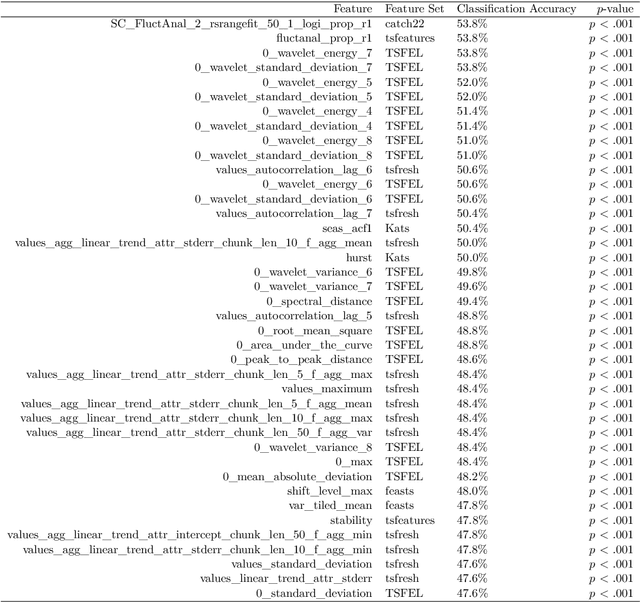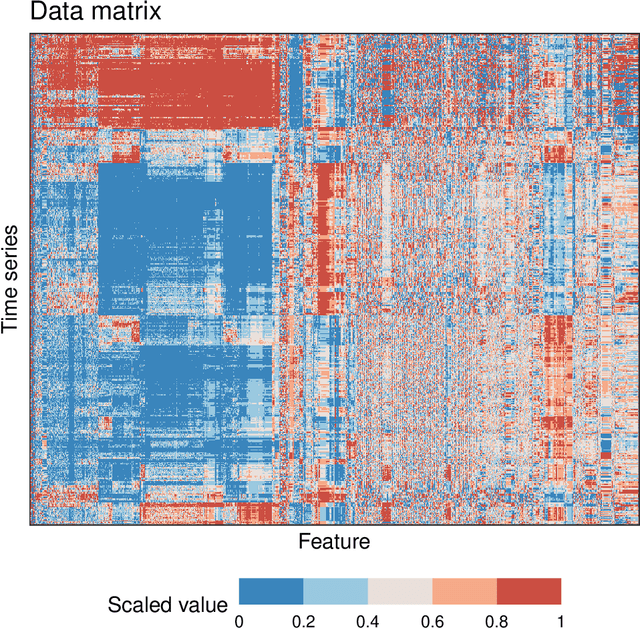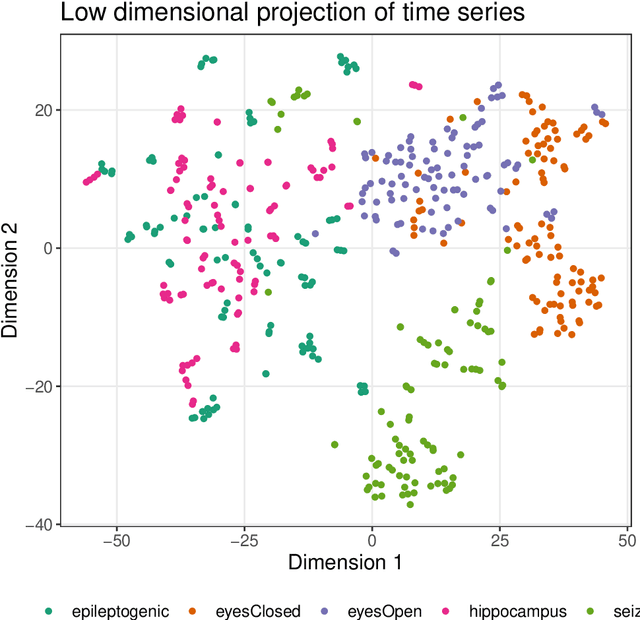Feature-Based Time-Series Analysis in R using the theft Package
Paper and Code
Aug 17, 2022



Time series are measured and analyzed across the sciences. One method of quantifying the structure of time series is by calculating a set of summary statistics or `features', and then representing a time series in terms of its properties as a feature vector. The resulting feature space is interpretable and informative, and enables conventional statistical learning approaches, including clustering, regression, and classification, to be applied to time-series datasets. Many open-source software packages for computing sets of time-series features exist across multiple programming languages, including catch22 (22 features: Matlab, R, Python, Julia), feasts (42 features: R), tsfeatures (63 features: R), Kats (40 features: Python), tsfresh (779 features: Python), and TSFEL (390 features: Python). However, there are several issues: (i) a singular access point to these packages is not currently available; (ii) to access all feature sets, users must be fluent in multiple languages; and (iii) these feature-extraction packages lack extensive accompanying methodological pipelines for performing feature-based time-series analysis, such as applications to time-series classification. Here we introduce a solution to these issues in an R software package called theft: Tools for Handling Extraction of Features from Time series. theft is a unified and extendable framework for computing features from the six open-source time-series feature sets listed above. It also includes a suite of functions for processing and interpreting the performance of extracted features, including extensive data-visualization templates, low-dimensional projections, and time-series classification operations. With an increasing volume and complexity of time-series datasets in the sciences and industry, theft provides a standardized framework for comprehensively quantifying and interpreting informative structure in time series.
 Add to Chrome
Add to Chrome Add to Firefox
Add to Firefox Add to Edge
Add to Edge